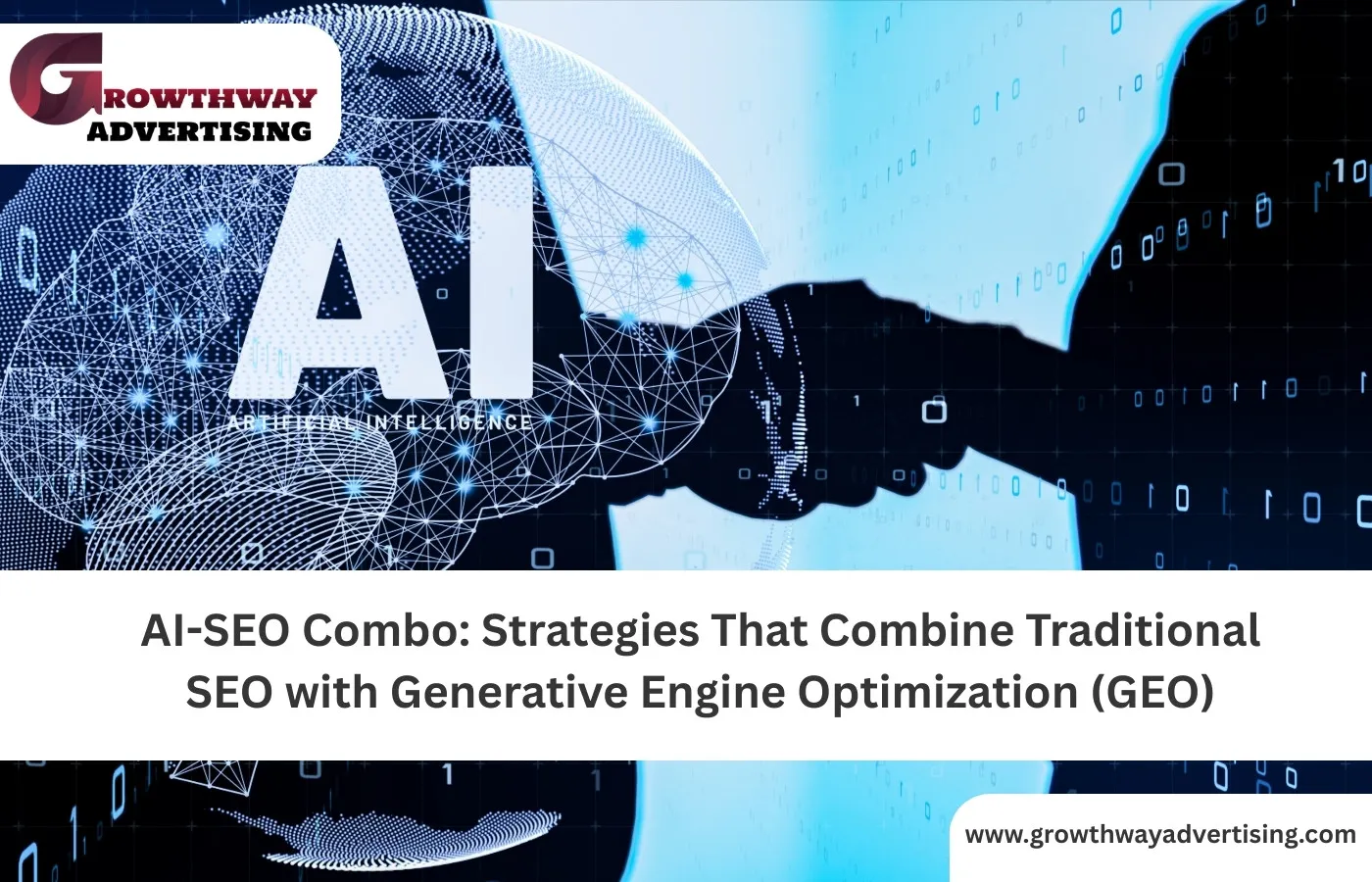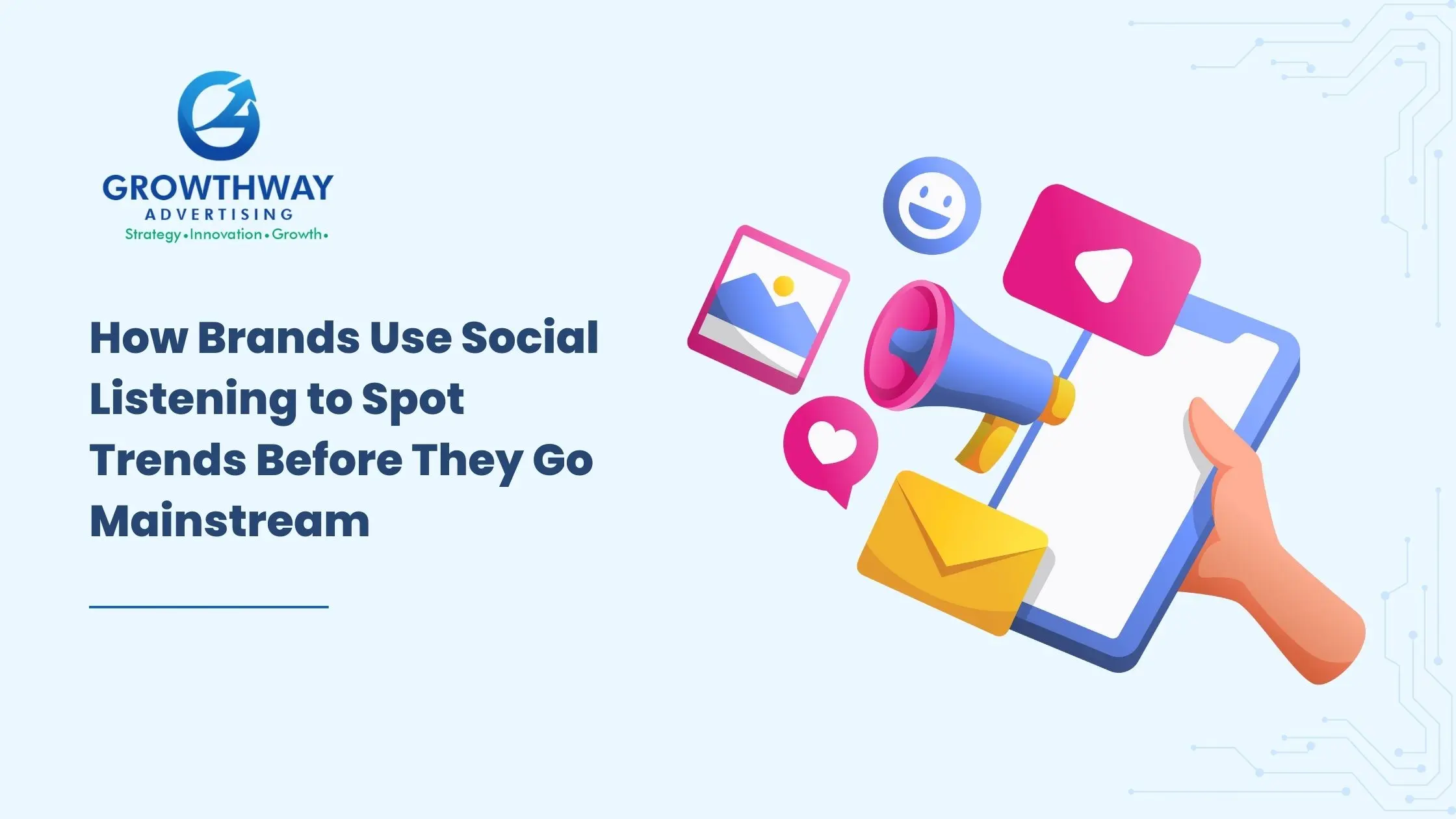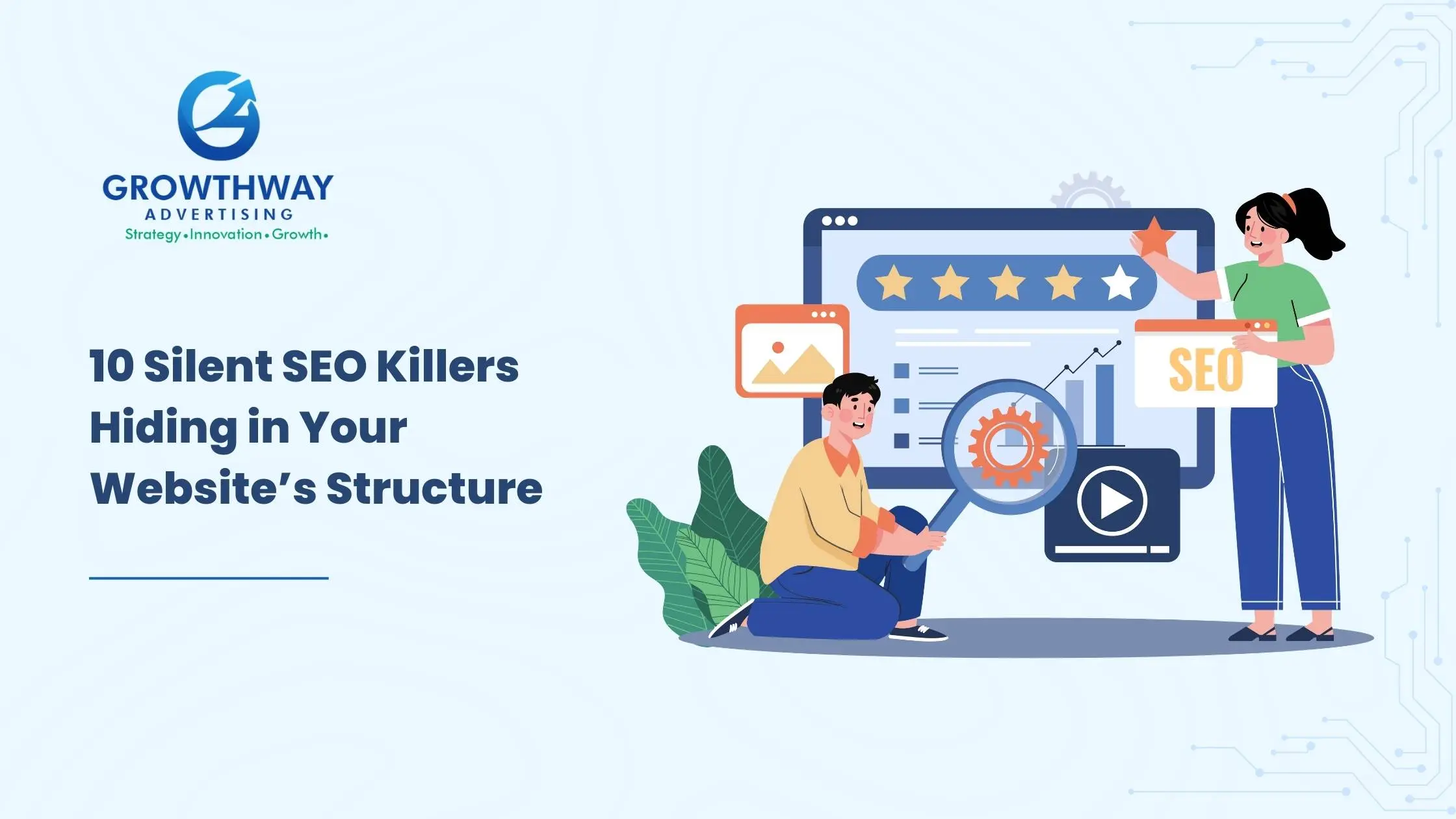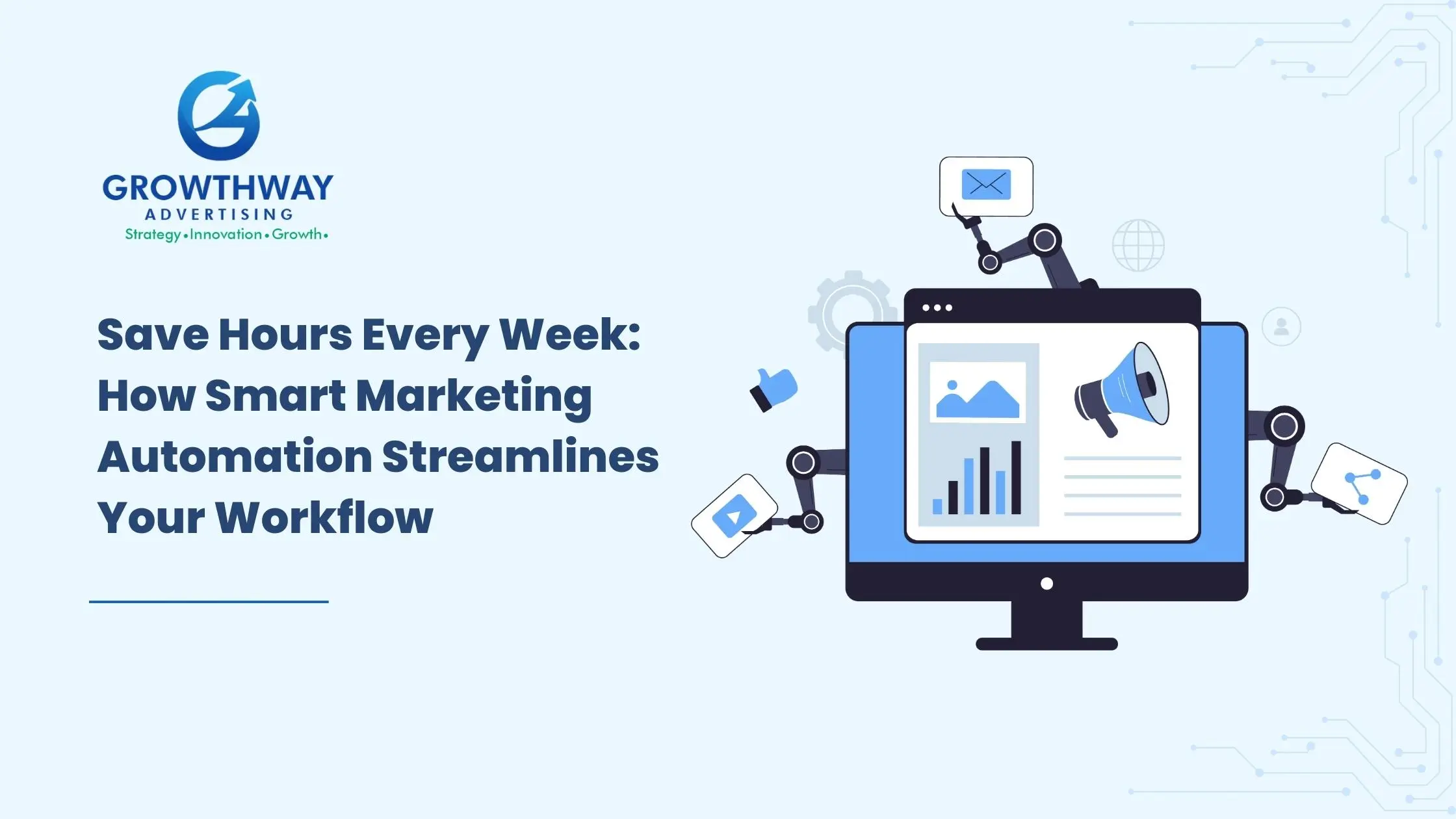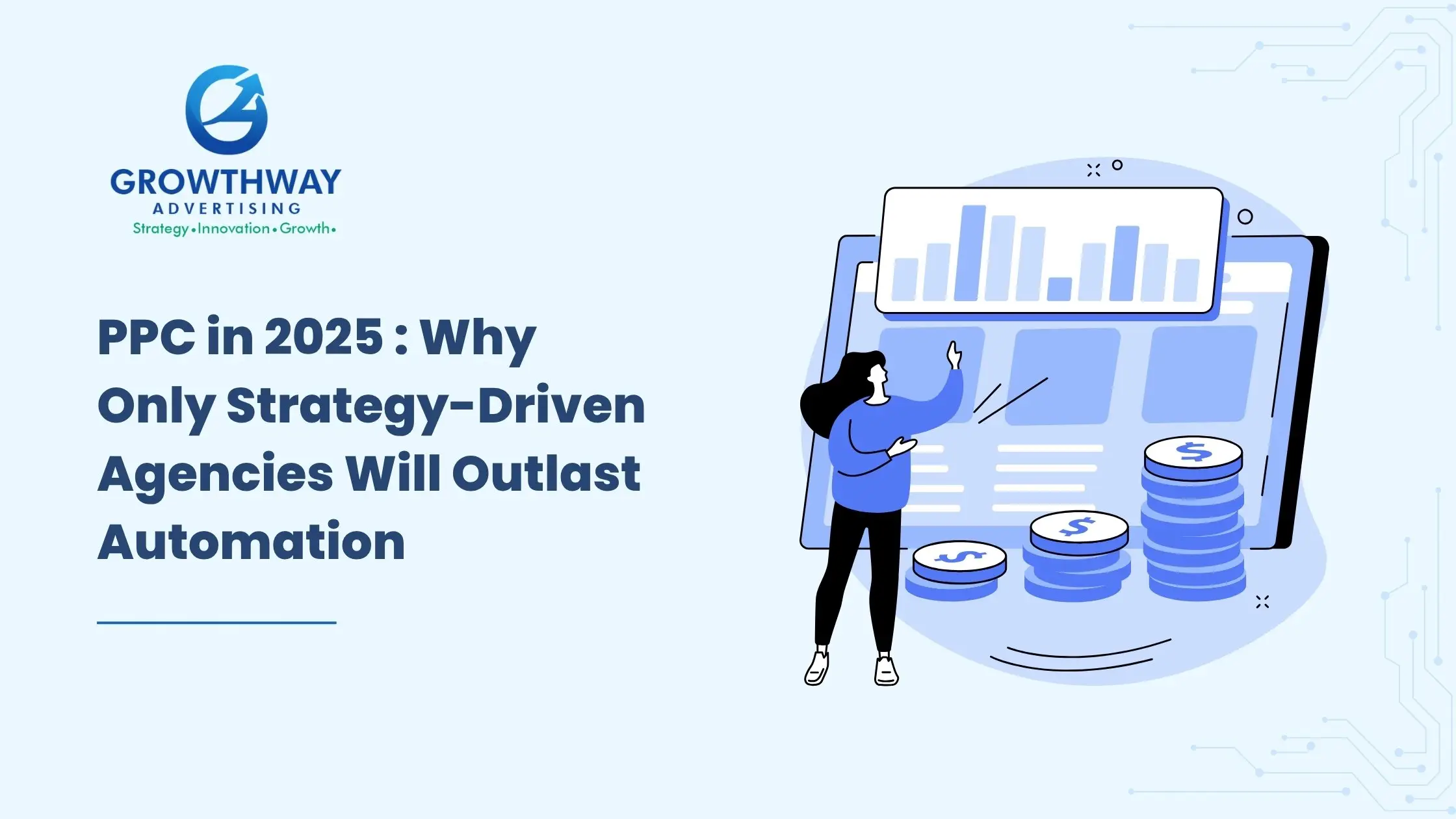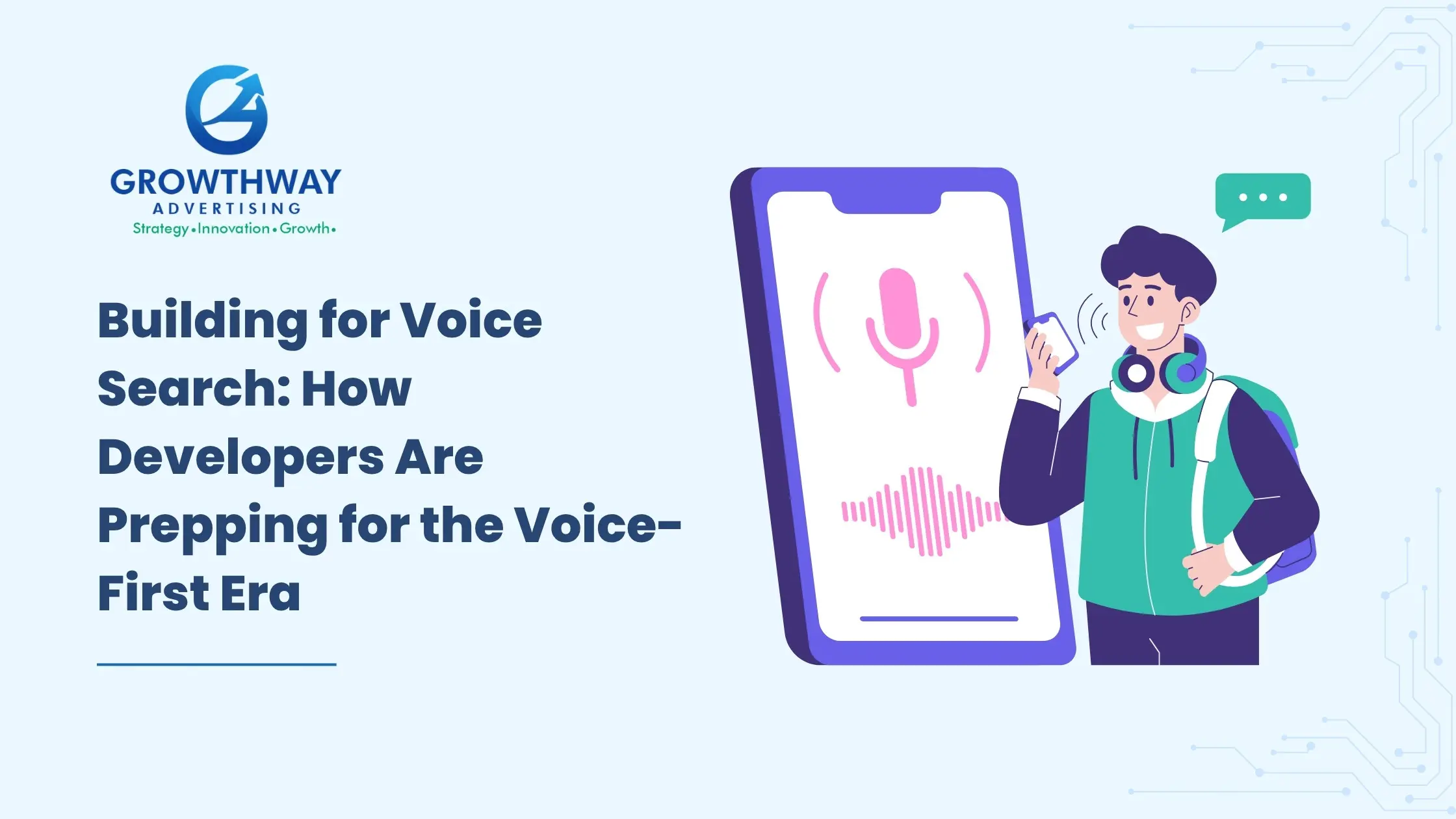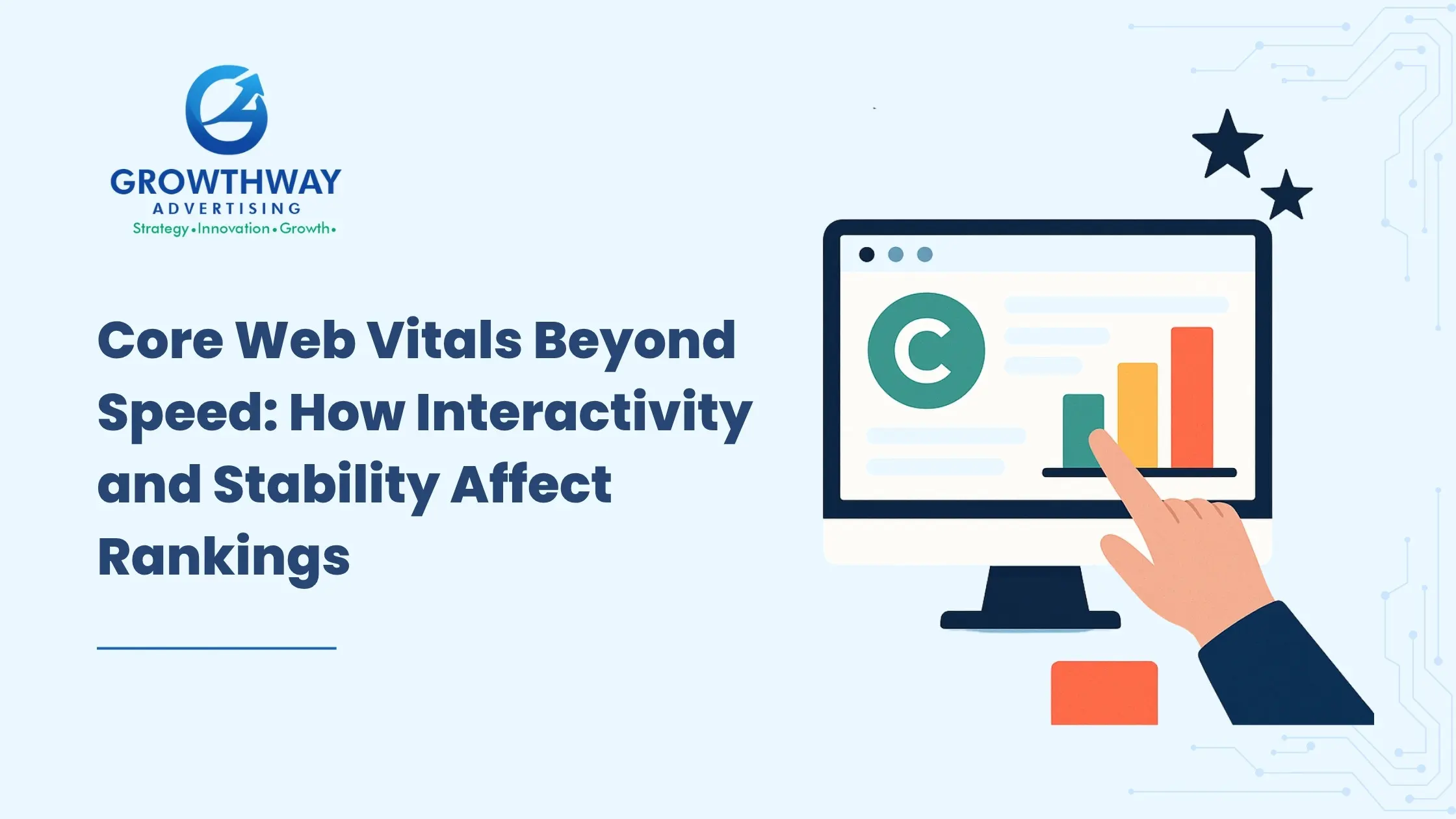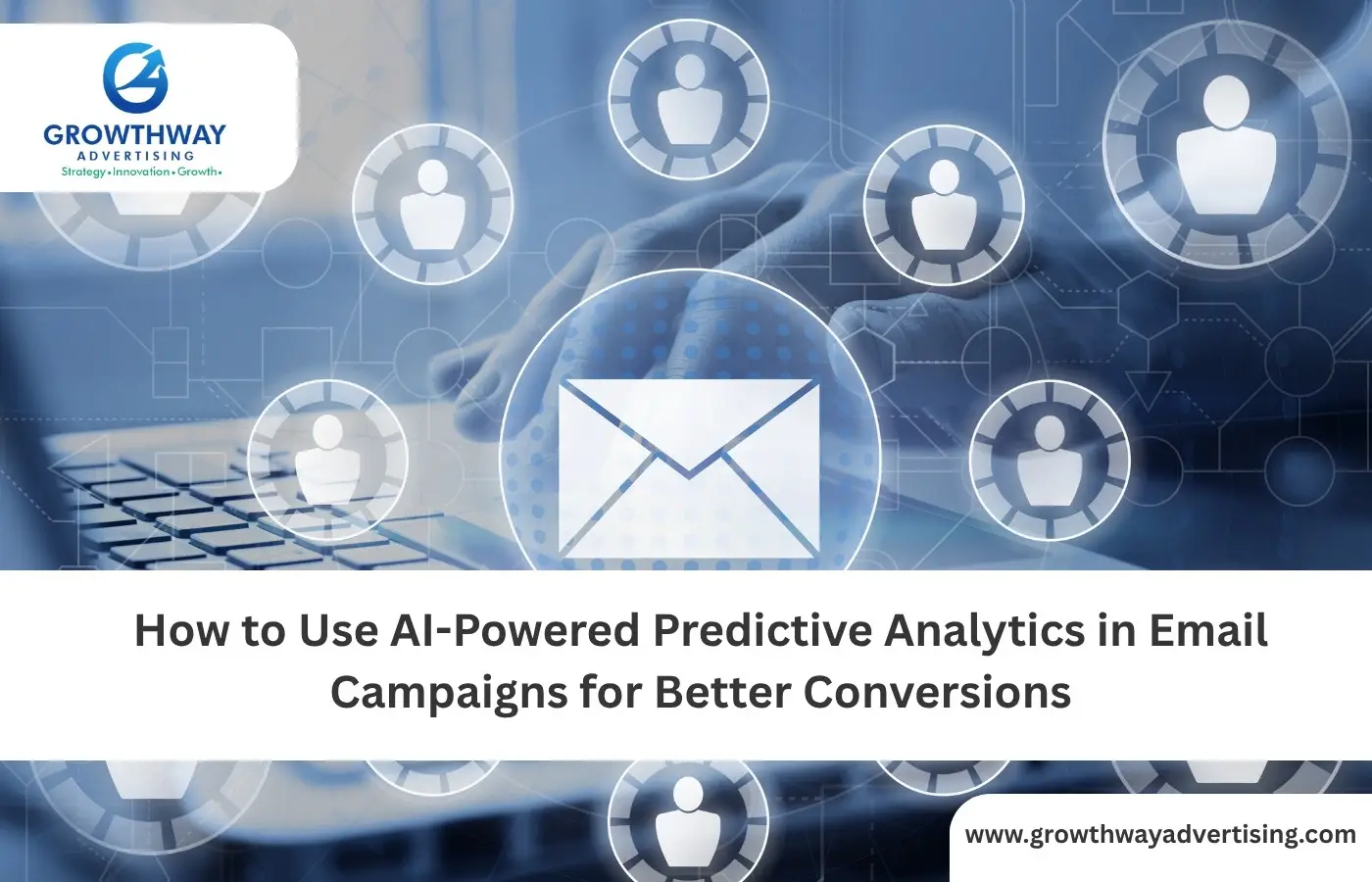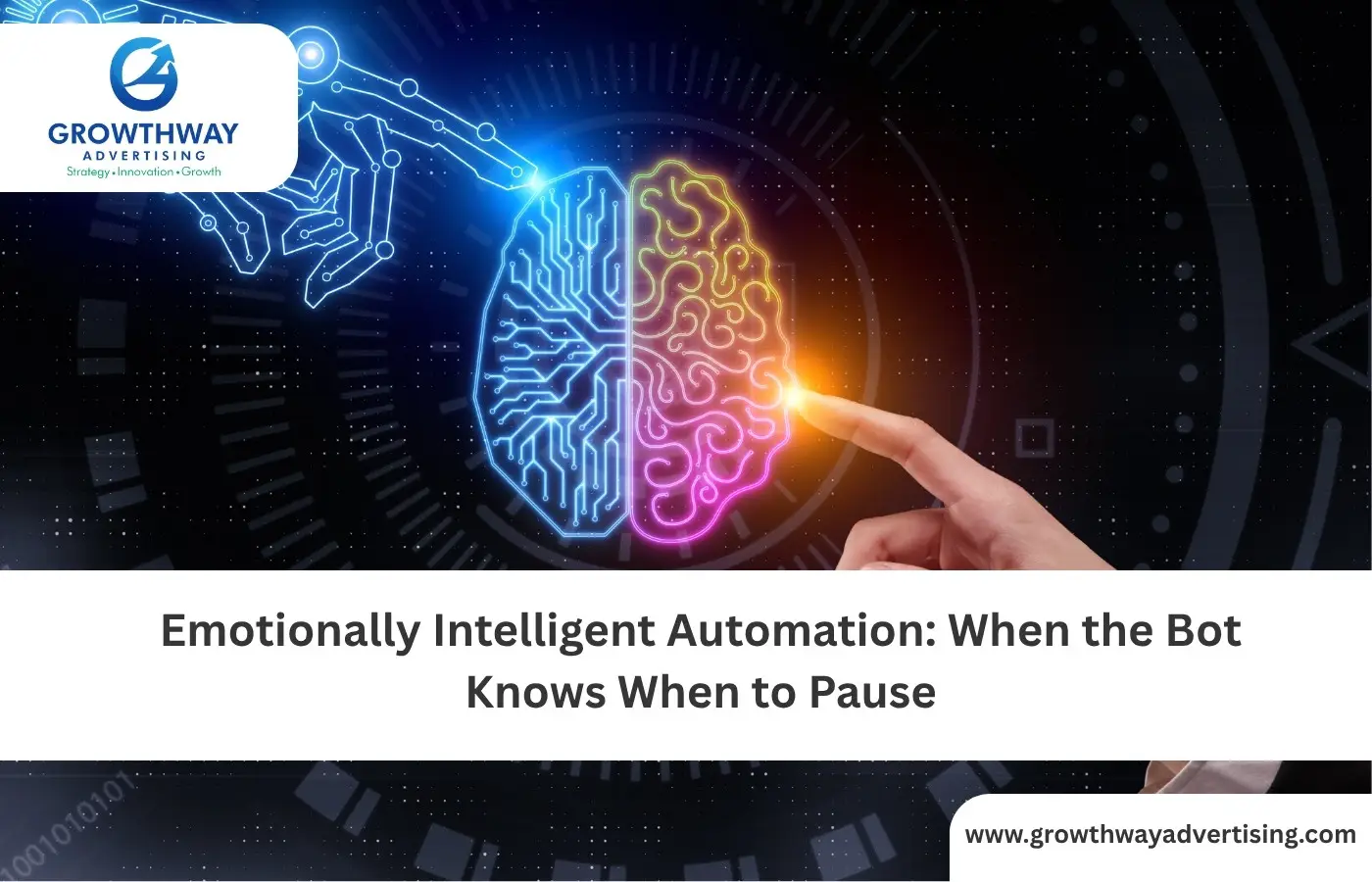Search is changing faster than it has in decades. The rise of generative AI inside search engines is shifting how people discover, evaluate, and click. Where traditional SEO focused on ranking web pages in SERPs, Generative Engine Optimization (GEO) is about making sure AI-powered summaries, overviews, and answers cite your brand. The real opportunity lies in blending the two approaches into an AI-SEO combo so that you win visibility both in organic rankings and in generative search experiences.
Let’s break down what this means in practice, and how a business working with an seo agency, an seo consultant, or even handling in-house seo marketing can create strategies that combine the best of both worlds.
Why Traditional SEO Still Matters
Generative search hasn’t replaced the fundamentals. Engines like Google and Bing still crawl, index, and evaluate pages using signals that traditional seo services have always optimized for: content quality, technical optimization, structured data, and authority.
If your site is slow, unstructured, or missing core schema markup, AI models have less context to work with. That’s why entity optimization defining clear connections between your brand, products, and topics remains foundational.
A search engine optimization agency will still focus on basics like canonicalization, sitemaps, and crawl depth. But in the AI-SEO combo approach, these elements serve a new purpose: feeding structured, reliable information that generative engines can confidently use in their outputs.
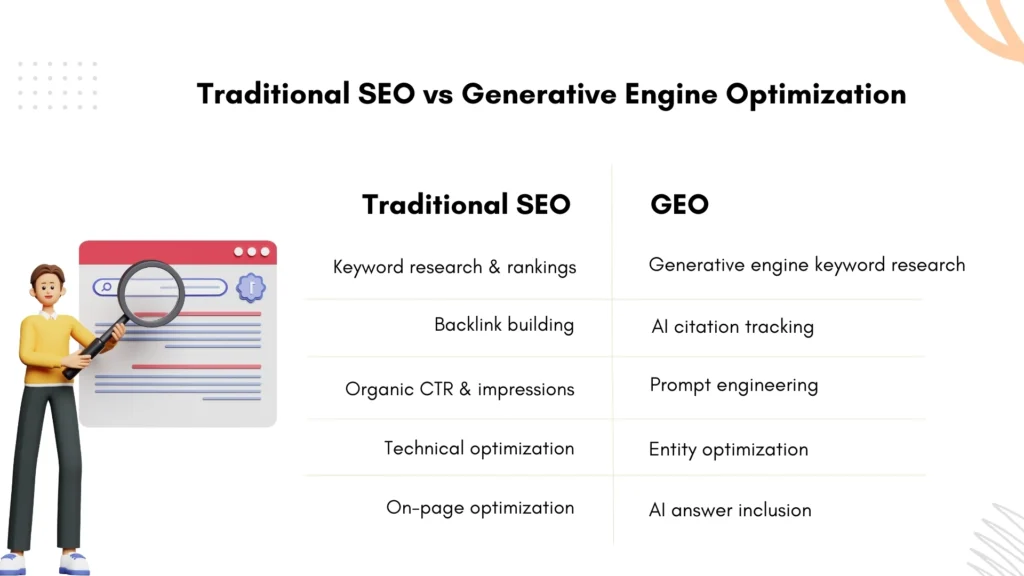
Generative Engine Optimization Explained
Generative engines like Google’s AI Overviews or Bing Copilot don’t just show a list of links. They generate answers. To be included, your content needs to be recognized, cited, and trustworthy.
That’s where AI citation tracking comes in. Instead of only measuring clicks, brands now need to measure how often their content is referenced in generative summaries. This creates a new layer of KPIs for any seo consultant citations, mentions, and inclusion rates alongside impressions and rankings.
Another shift is generative engine keyword research. Traditional keyword tools show search volume, difficulty, and CTR. With GEO, the real question is: “What prompts trigger AI answers where my brand can be cited?” That’s why prompt engineering isn’t just for developers. Marketers can use it to test how generative engines phrase answers, then optimize content around those patterns.
Core AI-SEO Combo Strategies
So what does it look like to combine the old and new? Here are key strategies where traditional SEO meets GEO.
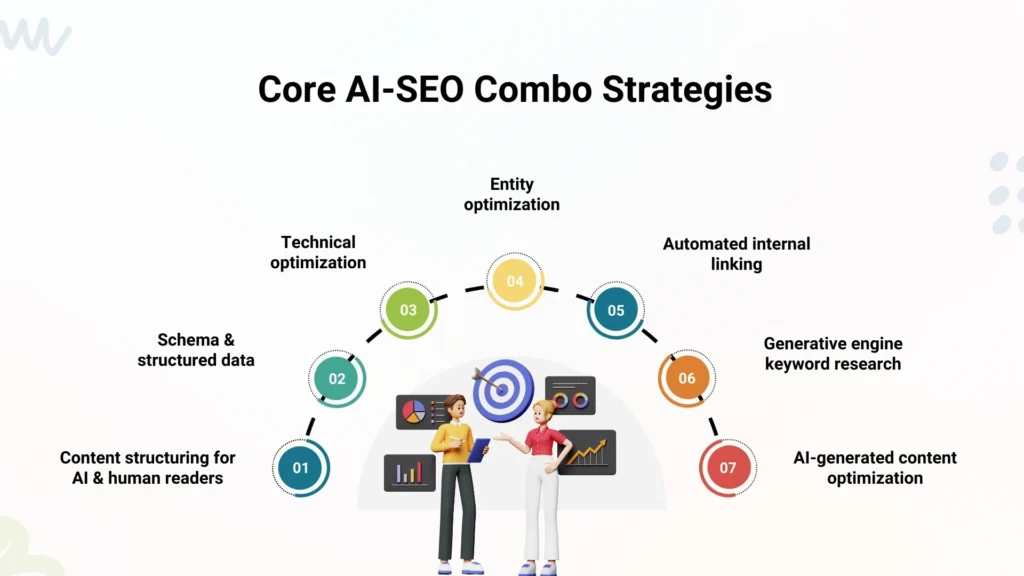
1. Content Structuring for Dual Purposes
A traditional SEO playbook would optimize headings, meta tags, and internal links. Now, you need to write in formats that AI can easily parse: concise definitions, step-by-step lists, FAQs. Think about how a generative engine would lift content.
At the same time, AI-generated content optimization has to happen. Simply pumping out machine-written posts won’t work. Instead, human editors should refine AI drafts, ensure accuracy, and add original perspectives.
2. Schema and Structured Data
If there’s one bridge between SEO and GEO, it’s structured data. Schema markup clarifies what a page is about, making it easier for AI to reference. Product pages, how-to guides, FAQs, and reviews should all carry schema that explicitly defines context.
For example, local businesses using local seo services can add localBusiness schema so that AI doesn’t just know their name but also their location, service areas, and hours.
3. Technical and Entity Optimization
The core of technical optimization still includes mobile performance, Core Web Vitals, and clean site architecture. But in the AI context, it’s also about providing crawlable content in formats generative engines prefer. PDFs, gated assets, and poorly formatted tables often don’t make it into AI answers.
Layered on top is entity optimization. Building out entity profiles in knowledge graphs, Wikidata, and schema markup ensures AI engines can recognize your brand as authoritative.
4. Automated Internal Linking
Traditional SEO benefits from logical site navigation. Now, automated internal linking systems can dynamically connect related content clusters. This not only improves crawl paths but also reinforces topical authority for AI engines. The stronger the internal network, the more likely your content is to be referenced in AI summaries.
5. Generative Engine Keyword Research
A traditional seo marketing approach looks at search intent. GEO expands that by looking at prompt intent. Tools are emerging that simulate generative answers based on different queries. From there, brands can identify gaps where no clear authoritative source is cited, and step in with targeted content.
This is where a seo agency or seo services company can differentiate, by mapping traditional keyword data to emerging GEO triggers.
Advanced Tactics to Push Visibility
AI-Powered Content Refreshes
Old blog posts and guides can be updated not just for keywords but for AI-readability. Adding bullet points, concise definitions, and structured summaries makes content more likely to be lifted by generative engines.
Citation Monitoring Dashboards
Forward-thinking agencies are building AI citation tracking dashboards. These monitor how often a brand appears in generative summaries across engines and regions. Unlike rank tracking, this is about monitoring answer inclusion rates.
Prompt Engineering for Marketing Teams
Prompt engineering isn’t just a developer’s skill. Marketers can use it to test how different questions surface answers in AI tools, then adapt site content to mirror those phrasing patterns. For example, testing prompts like “best seo consultant in New York” can reveal what engines consider authoritative sources.
GEO for Local and Industry Niches
Combining local seo services with GEO is underexplored but powerful. Local businesses can optimize for AI overviews that highlight location, reviews, and specific services. Likewise, industries like healthcare, SaaS, and e-commerce can develop playbooks for how generative engines present their offerings.
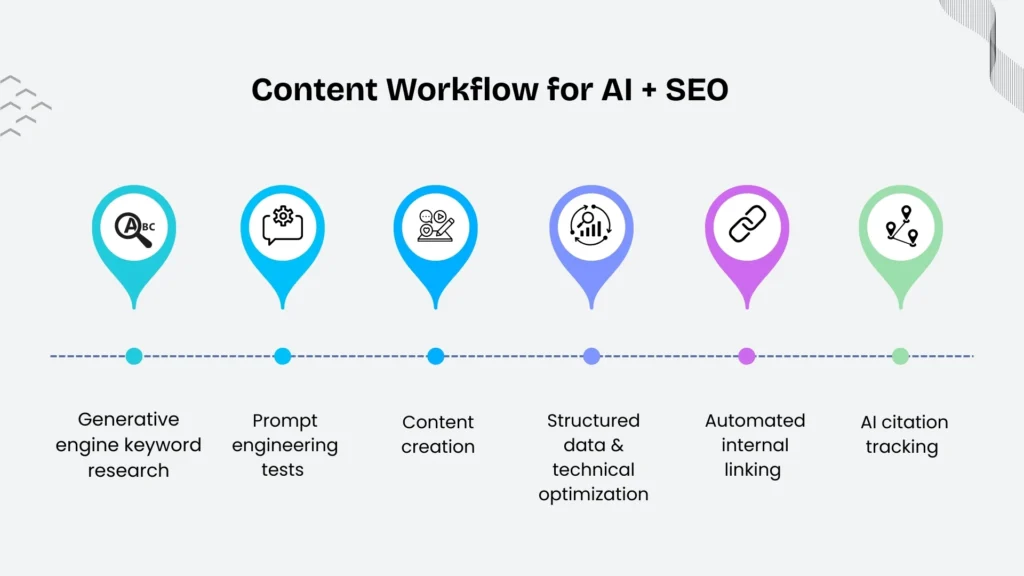
Measurement Beyond Clicks
The biggest shift is in how results are measured. Traffic and rankings still matter, but GEO requires a broader framework:
- AI citation tracking (how often your brand is mentioned in AI answers)
- Engagement with zero-click results (brand exposure without traffic)
- Share of generative voice (percentage of AI overviews citing your content vs competitors)
Traditional KPIs like bounce rate and CTR need to be combined with these new GEO metrics to give a true picture of performance.
The Role of Agencies and Consultants
Businesses rarely have the bandwidth to run both traditional SEO and GEO in parallel. This is where an experienced seo agency can step in. Agencies that blend traditional expertise with GEO experimentation can provide end-to-end seo services: from keyword analysis and AI-generated content optimization to automated internal linking and entity optimization.
For smaller businesses, a specialized seo consultant can help navigate this transition. From setting up GEO dashboards to refining structured data, consultants can guide adoption without overwhelming internal teams.
The AI-SEO Combo Mindset
The real mindset shift is to stop treating traditional SEO and GEO as separate. They’re two sides of the same coin. SERPs are still alive, but AI answers are taking up more space. That means your optimization needs to serve both:
- Traditional SEO → rankings, organic clicks, brand discovery
- GEO → citations, authority, visibility inside AI overviews
Businesses that understand this duality will be the ones that thrive in the next era of search.
FAQ’s
Traditional SEO practices like technical optimization, structured data, and link building feed information into search engines. These same elements give generative engines reliable data to pull from, so they work hand in hand.
GEO focuses on optimizing content so that AI-driven summaries, like Google’s AI Overviews, include your brand. It involves entity optimization, AI citation tracking, and generative engine keyword research to identify prompts that trigger AI citations.
Yes. Pairing GEO with local seo services helps AI engines display accurate business information like addresses, service areas, and reviews. This ensures local businesses appear in both map packs and AI-generated summaries.
Traditional keyword research focuses on search volume and ranking difficulty. Generative engine keyword research explores which prompts or queries trigger AI-generated answers and whether your brand is cited in those responses.
AI-generated content optimization means refining machine-produced drafts with human editing, fact-checking, and unique insights. It’s not about replacing writers but combining AI speed with human quality for both SEO and GEO.

